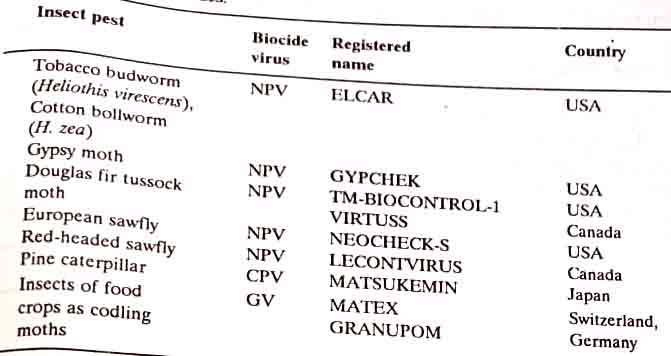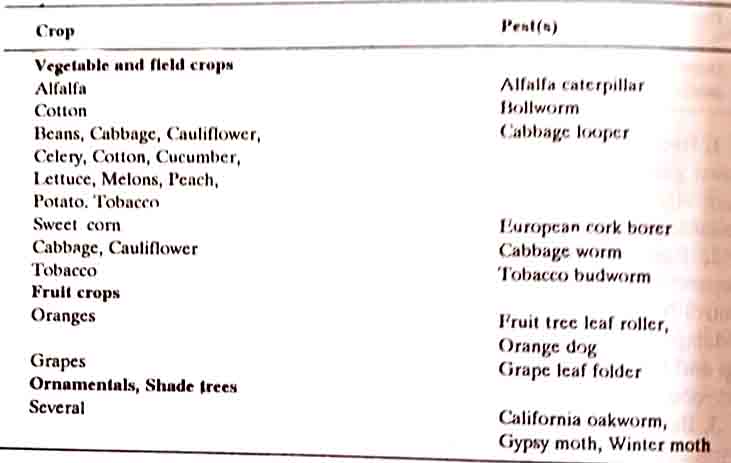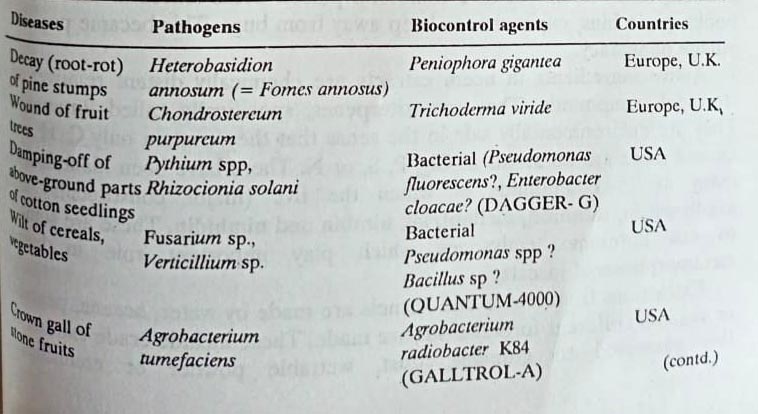BSc 2nd Year Biocides in Plant Protection Notes Study Material
BSc 2nd Year Biocides in Plant Protection Notes Study Material: BSc is a three-year program in most universities. Some of the universities also offer BSc Honours. Out of those, there are BSc 2nd Year Study Material, BSc Sample Model Practice Mock Question Answer Papers & BSc Previous Year Papers. At gurujistudy.com you can easily get all these study materials and notes for free. Here in this post, we are happy to provide BSc 2nd Year Plant Pathology Biocides in Plant Protection Notes Study Material.

BSc 2nd Year Biocides in Plant Protection Notes Study Material
What is a Biocide?
A biocide may be defined as “a live organism as such, its morphological/ structural unit, biomass or metabolite, used against a target organism to restrict or eliminate its activity harmful to the yield of intended useful product.” Thus viral particles, bacterial cells, fungal spores, used as such, their metabolites, and plant extracts used in the management of pathogens, pests, and weeds are biocides.
A natural antibiotic (as penicillin G) is a biocide, but a semi-synthetic one like ampicillin with side chain substitutions in natural penicillin does not qualify to be a biocide. An ideal biocide must be environmentally safe, biodegradable, and renewable.
Why Biocides?
We are aware of the problems of environmental degradation caused by pesticides used in agriculture, forestry, and public health. Since sources of biocides are a component of the ecosystem, there are no environmental problems. As their activity is limited in most cases to the target organism (unlike broad-spectrum pesticides, which, besides targeting also harm/eliminate non-target organisms) there is no disturbance of any kind in the ecological balance of nature.
The most appropriate answer to the question, “why biocides? is “urgent need to eliminate or to minimize the use of plant protection chemicals (pesticides).” Biocides are environmentally safe because they do not cause socio-economic, political and environmental problems encountered very often with chemical pesticides. With biocides, (i) huge investment on chemical industry and energy is reduced, (ii) environmental degradation eliminated, (iii) biomagnification of nonbiodegradable xenobiotics in food chain is ruled out, (iv) resistance problem in target organism eliminated, (v) no possibility of iatrogenic diseases, (vi) no loss in biodiversity, as biocides are usually specific in their action on target organisms.
The above mentioned environmental problems came into existence particularly after green resolution, a chemical-based culture in agriculture imported to developing world. There was upsurge of agrochemicals used as fertilisers and plant protection chemicals.
Kinds of Biocides
Biocides are as varied as the forms of life. A range of biocides are being developed from all possible components of the biodiversity. Ours is a sub-continent with several unique features. India is blessed with a rich biodiversity.
Crop protection is a principal component of crop production. Pathogens, pests and weeds are the three natural enemies of our agriculture and forestry. Lower as well as higher organisms have been studied for use as biocides to protect plants from these three enemies. Thus there are microbial biocides as well as botanical biocides.
Microbial Biocides
They come from microorganisms. A range of microbes could be exploited as biocides for the management of microbial pathogens (virus, mycoplasma, bacterium, fungus), insect pests, nematodal pests, as well as weeds of agriculture and forestry. Accordingly, there are viral insecticides, bacterial bactericides, bacterial fungicides, bacterial insecticides, fungal fungicides (mycofungicides), fungal insecticides, fungal nematicides, and fungal herbicides (mycoherbicides). There are numerous such studies and much information has accumulated during last 10 years or so. Some of the microbial biocides which could become very common in crop protection are being referred here.
[I] Viral insecticides
Viruses attack a range of insects and arthropods. Their specificity makes them ideal organisms to be used against target pests. About 600 insect species are known to be attacked by viruses. The viruses belong to (i) nuclear polyhedrosis (NPV) group, (ii) cytoplasmic polyhedrosis group, as well as (iii) granulosis group. Baculoviruses are perhaps the most extensively studied insect viruses and they are nuclear polyhedrosis and granulosis viruses. Viruses have been used to control outbreaks of several insect posts such as gypsy moth, Doughlas fir tursock moth, pine caterpillar, leal budworm, codling moth, white butterfly, bollworm (cotton), earworm (corn).

[II] Bacterial biocides
Various species of different bacterial genera have been developed as bacterial biocides for use against target microorganisms. There are bacterial bactericides, bacterial fungicides and bacterial insecticides. Of these, the most successful have been the bacterial insecticides, used not only in plant protection but also in public health. Bacillus thuringiensis could be identified as very potential insecticide used against insect pests of płants as well as against the mosquito larvae in control of malaria.
1. Bacterial bactericides. One of the successful story is the control of the crown gall disease of stone fruits caused by Agrobacterium tumefaciens by using Agrobacterium radiobacter strain K84. Registered preparations are available in market with the name Galltrol-A in the U.S.A.
2. Bacterial fungicides. There are many studies of this type. Some preparations of bacteria are being produced for use at commerical level to control fungal diseases of plants. The two of this type include (i) the control of damping off of above ground parts of cotton seedlings, caused by Pythium spp and Rhizoctonia solani, by using species of the genera Pseudomonas and Enterobacter in the U.S.A.
3. Bacterial insecticides. Several bacterial pathogens of insects are being developed for use as bacterial insecticides to control range of insect pests of agricultural crops, including vegetables and fruits, as well as forest trees. The species belong to the genera Pseudomonas, Enterobacter, Bacillus, Serratia, Proteus and Xenorhabdus. Of these the most extensively used for developing commercial preparations has been Bacillus thuringiensis. Several products of this bacterium are registered in 5-6 countries for use against insect pests.
The bacterium has been tested successfully against more than 150 insect species. About 16 formulations based on exo- as well as endotoxins are in use in the USA, France, Germany, and ex- USSR. More than U subspecies of B. thuringiensis have been identified (called serotypes). Some registered products of this bacterium are, Thuricide, Sporeine, Condor, Cutlass, Foil and Invade. In India also trials have been made for thuricide against pests of lac, cruciferous crops and sugarcane pests. A 0.4% thuricide preparation has been found superior over DDT, malathion and endrin. (BSc 2nd Year Biocides in Plant Protection Notes Study Material)

[III] Fungal biocides
A range of fungi have been used to control fungal pathogens, nematode pests (myconematicides), insect pests (mycoinsecticides) as well as weeds (mycoherbicides). These are given below.
1. Fungal fungicides. (Mycofungicides). There are hundreds of examples of fungal antagonists of fungal pathogens of root and shoot system of plants. Interactions occur in rhizosphere as well as phyllosphere. These include hyperparasites as well as antagonists. Of these at least two are currently in use at commercial scale in UK and Europe. These are (i) control of decay (root rot) or pine stumps, caused by Heterobasidion annosum by Peniophora gigantea and (ii) control of wound of fruit trees, caused by Chondrostereum purpureum by Trichoderma viride.
2. Fungal nematicides (Myconematicides). Several fungi have been studied for developing possible nematicides of vegetable, fruit and cereal crops. Both, classical nematode-capturing (trap-forming) and soil fungi (opportunistic) have been investigated. Classical fungi include species of Arthrobotrys, Dactylaria, Dactylella and Monacrosporium. Soil fungi are Verticillium chlamydosporium and Paecilomyces lilacinus. They attack nematodes of the genera, Meloidogyne, Rotylenchulus, Globodera and Heterodera, the pests of a range of field crops, especially vegetables.
3. Fungal insecticides (Mycoinsecticides). A range of entomogenous fungi have been studied in relation to biocontrol of insect pests of different crops. Seceral products are already registered and 4-6 are even being used on commercial scale by growers in the field and greenhouse conditions. The fungi found most successful include Aschersonia aleyrodis, Beauveria bassiana, B. brongniartii, Hirsulella thompsonil, Metarhizium anisopliae, Nomuraea rileyi and Verticillium lecanii, used to control a range of insect pests in developed countries.
4. Fungal herbicides (Mycoherbicides). Though viruses, bacteria & fungi have been studied for developing entahla hiaherbicides, fungi could be found most ideal organisms. Both, classical and mycoherbicides or inundative strategies have been evolved. In the former strategy fungal weed. In the latter strategy, repeated inoculations of the fungal parasite are made on the weed host. The parasite is not new to the area. Repeated doses are adminstered into the host weed to eradicateit. Specialised fungi as rust and less- specialised species of fungi are used.

The above account makes it evident that there is enough scope for exploiting the potential of various microorganisms, acellular (virus) as well as prokaryotic (bacteria) and eukaryotic cellular (fungi) microbes to be used as microbial biocides to control pathogens, pests as well as weeds. They are mass-produced on suitable cheap substrates including agricultural, urban, municipal and industrial wastes.
There is two way benefits. These microbes dispose off the wastes and also then used as biocides. Out of several such cases, some have also been accepted in agriculture and forestry. (BSc 2nd Year Biocides in Plant Protection Notes Study Material)

Botanical Biocides
Besides microorganisms, higher plants have also been studied for their potential as biocides. We are very rich in biodiversity and crude plant extracts possess antimicrobial properties. These are very well-known in human medicine. India is well known for developing ayurvedic and unani medicines. During last few years, higher plant preparations have also been studied for developing suitable biocides to control pests and pathogens. (BSc 2nd Year Biocides in Plant Protection Notes Study Material)
Out of several, one indigenous plant species found an ideal source of effective bioinsecticides is the common neem (Azadirachta indica) plant. Leaf and seed extracts proved ideal insecticides. For centuries millions have cleaned their teeth with neem twigs, smeared skin disorders with neem-leaf extracts, taken neem tea as a tonic and placed neem leaves in their beds, books, grain bins, cupboards to keep away from bugs. This became popular village pharmacy. (BSc 2nd Year Biocides in Plant Protection Notes Study Material)
Active ingredients in neem extracts are chemically distant relatives of steroidal compounds. They are triterpenes, specifically called limonoids. They are environmentally safe in the sense that they contain only C, H and O, and there are no atoms of Cl2, P, S, or N. There have been identified as many as 25 compounds of which the five (major constituents) are azadirachtin, salannin, meliantriol, nimbin and nimbidin. These are similar to sex hormones ecdysones which play important role in larval metamorphosis of insects.
Extractions from leaves and kernels are made by water, hexane, pentane or alcohol. Different formulations are made. These include crude extract, or this converted to granules, dust, wettable powder or emulsifiable concentrates.
Neem products are registered and patented under different trade names. These have been found suitable for the control of several insect pests, such as desert locust, Colorado potato beetle, grasshopper and gypsy moth. Neem biocides are not outright killers of insect pest but act as repellent or modify its metamorphosis. (BSc 2nd Year Biocides in Plant Protection Notes Study Material)
Mechanisms of Action of Biocides
There are thousands of examples where antimicrobial activity of a biocide has been demonstrated. Out of these, in very few cases sincere efforts could be made to find out the precise mechanism(s) involved in antimicrobial activity of the concerned biocide and the chemical nature of the microbial metabolites. In some cases the antimicrobial principle has been chemically identified.
In most cases of biocontrol agents the mechanisms involved are antibiosis, hyperparasitism, competition, induced resistance and hypovirulence. Major microbial metabolites involved in biocontrol of pathogens include antibiotics, siderophores, ammonia, enzymes and hydrogen cyanide. Keeping in view the limitations of the present book, it is not possible to elaborate such aspects here in the area of biocides in plant protection. (BSc 2nd Year Biocides in Plant Protection Notes Study Material)
BSc 2nd Year Biocides in Plant Protection Notes Study Material
BSc 2nd Year Sample Model Practice Mock Test Question Answer Papers